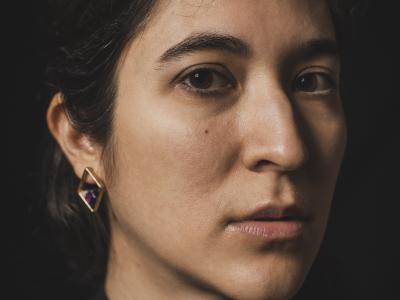
An IASH Work-in-Progress, delivered by Dr Stephanie Lamprea (Digital Research Postdoctoral Fellow, 2025)
A Feminist Digital Voice in Electroacoustic Music and Interdisciplinary Performance Art
Electroacoustic music has expanded the ways in which the voice can be shared, manipulated, transformed, and received. It has revealed a materiality of voice and body that can be found within technology, through which we can recontextualise the relationships, as Miriama Young notes, ‘between bodies and machines, between liveness and reproduction, between authenticity and mediation, between inscription and bodily absence…’ This embodiment of voice through the machine, however, does not address the pre-existing patriarchal associations of voice and body with gender. When not addressed, these associations become amplified in performance art with the addition of technology and sound design. Audio production has emphasised this patriarchal order in, for example, the design of early radio equipment which implemented frequency ranges primarily suitable for male voices, the reinforcement and disentangling of gender bias in AI assistant technology, the militaristic vernacular used in electronic music production, and the exclusion of female artists in the modern technological canon.
These scenarios necessitate an interdisciplinary and feminist approach to the digital voice, bearing two questions:
• What is the feminist digital voice, and what is its significance in the present day?
• How does one create feminist art with technology that is androcentric?
As machine-learning materials are utilised in electroacoustic and interdisciplinary works, it is pertinent to embark on feminist research of this technology and art-making to preserve, develop, and safeguard the spoken, sung, and signed female voice in a post-humanistic age. Through new practice-based research, Dr. Lamprea develops two postdoctoral projects: a live concert performance for voice, live electronics, wearable performance technology, and integrated British Sign Language, and an interdisciplinary video installation. These projects are rooted in several theoretical models including queer voice theory, feminist new materialism and posthuman feminism, feminist ethnography, D/deaf musicology and signed voice, and voice-body-machine entanglement.
Please join in-person, or click the link below to join the webinar:
https://ed-ac-uk.zoom.us/j/83015772676
Passcode: b1QpaAD7
